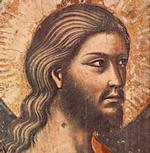“Everything She Had: The Widow’s Mite of St. Jeanne de Chantal”
In October 1601, Christophe, Baron de Rabutin-Chantal, went out from his château near Dijon, France, for a short hunting trip. As he rode with his cousin, neighbor, and friend, Charles d’Anlezy, the latter’s shotgun fired accidentally, giving Christophe a mortal wound under which he suffered for nine days. Christophe’s wife—born Jeanne Françoise Frémyot in 1572 and known to English-speakers as St. Jane Frances de Chantal—had recently given birth to their sixth child. Repeatedly during his dying days, Christophe pardoned Anlezy and urged his guilt-ridden friend not to hate himself for what was wholly accidental. To his devout wife, the baron counseled forgiveness, to little effect. Her future spiritual director, bishop François de Sales, would later help her release this grudge from her heart. Yet in those final days, while Christophe saw his impending death as “having come from heaven,” Jeanne was unable to imagine God’s purpose in allowing it. She only wanted her dear husband to be spared.
Jeanne had been born of an eminent family whose fortunes fluctuated during the Wars of Religion. Her father Bénigne Frémyot, president of the Parlement of Burgundy at Dijon, belonged to that class of magistrates and bureaucrats known as the nobility of the robe. During the 1580s and 1590s, open conflict between members of the Catholic League (who opposed royal tolerance of Protestantism and the impending succession of then-Protestant Henry of Navarre) and Catholics loyal to the throne (derogatorily called politiques) like Frémyot led to the latter’s exile from Dijon. Frémyot would not return to his home and position until 1595, when the Leaguers in Burgundy accepted Henry of Navarre as King Henry IV, now converted to the Catholic Faith. For Jeanne, all this turmoil meant prolonged time away from her native city and unease over her family’s situation.
Contrary to Leaguer rhetoric, loyalty to Kings Henry III and IV did not imply laxity in faith. Bénigne Frémyot personally catechized Jeanne and his other children, and he gave a Christian example of virtue, especially of generosity with the poor. Some historians have seen the fervency of the League as the chief source of seventeenth-century French spirituality, but the Frémyot family is just one of many examples that show true devotion running across the spectrum of Catholic allegiances.
By the time of her father’s exile, Jeanne had already been sent to live with her sister’s new family in Poitou. Lower nobility sometimes found opportunities to raise their status through marriages with the older nobility of military pedigree, and so it was with Marguerite, Bénigne Frémyot’s eldest daughter. Five years living at a high noble court gave Jeanne a sense of what she did not want. Her suitors there abounded, but none of them pleased her, most of them being disingenuous courtiers, rather than upright, stable Catholics.
In 1592, through her father’s facilitation, Jeanne married Christophe, of an illustrious family that, like the Frémyots, had supported both Henry III and Henry IV. The new baronness Jeanne de Chantal fulfilled her duties in exemplary fashion. Christophe’s obligations included riding in Henry IV’s retinue for months at a time, and Jeanne was quickly plunged into the tasks of running their estate at Bourbilly, learning skills that would later serve her well as the head of a religious order. Social life there was lively, and Jeanne was no sour-faced saint but rather was known as simultaneously attractive, witty, gentle, and devout. Besides being a good marriage alliance for the families, the match proved a blessing for the couple themselves. They quickly won each other’s hearts. Jeanne helped smooth out Christophe’s rough edges, especially through her example of faith. Eventually, despite the probability of a brilliant career in the king’s service, Christophe retired from court to be with his beloved wife year-round. Their marriage saw both joy and sorrow—the latter especially in the deaths of their first two children shortly after birth. Yet because this couple lived the married vocation well, Christophe became a man who could quickly forgive the friend who had caused his death, and Jeanne was prepared for a new vocation through which God would greatly bless the Church.
Because Jeanne had nourished her interior life in prayer, she was able to weather the storms that came with her husband’s death. And storms there were. The grieving Madame de Chantal carried on, raising her four young children and keeping up a noble household, all the while facing intense interior battles. Ever more distinctly, she heard God calling her to remain unmarried, despite strong pressure from her family to remarry. Seeking to belong to God more completely, she put herself under strict obedience to a spiritual director recommended to her by some friends. This priest’s strange, arbitrary, and ultimately harmful methods would have sent St. Teresa of Avila into a fury. François de Sales wrote in his Introduction to the Devout Life that the right spiritual director was one in ten thousand, and he himself was the one for Jeanne.
In 1604, Jeanne’s brother, the Archbishop of Bourges, introduced her to Bishop François, who had been preaching at Dijon that Lent. Gentle, prudent, and a true lover of God, the holy Bishop of Geneva was exactly the director Jeanne needed. The Order of the Visitation, which they would later found together, was not their immediate work. Rather, Jeanne grew in sanctity by living her state of life well. In contrast to her former spiritual director, who had demanded many harsh exterior penances and an abundance of devotional exercises, François offered holy simplicity and nourished “two pillars,” her desire for holiness and the consecration to God of her permanent widowhood. François’s patient ways helped her face the anxieties and temptations that plagued her in the years after her husband’s death.
For three years, François counseled Jeanne to think of no further vocation than widowhood. Her desire for religious profession increased all the while, but he waited prudently before revealing his desire to found a women’s congregation. When, in 1607, they began envisioning together the structure of the new institution, François drew upon his exposure to dynamic women’s religious orders in Italy and his experience with the devout group in Paris around Madame Acarie (Bl. Marie de l’Incarnation). Yet, above all, Jeanne’s own needs as a widow with younger children helped determine what the Order of the Visitation would become.
Some scholars have interpreted the early evolution of the Visitandines as the triumph of patriarchy, the squelching of women’s efforts to establish an uncloistered mode of religious life, dedicated to charitable service. It is true that the first sisters, located at Annecy in the Duchy of Savoy were uncloistered and undertook works of charity outside of the convent. Yet when the Visitandines founded their first convent within French terrritory, in 1616 at Lyons, the archbishop there insisted that they be a formal religious order with cloister. François and Jeanne, eager to establish the Visitation all over France, accepted the archbishop’s demands, and the outside charitable works ended—even among the original Annecy sisters.
Recent scholarship has determined that these early changes were fully in keeping with Jeanne and François’s original goals. External charitable works had been a practice, not a purpose. Fundamentally, the Visitation was to be a congregation especially for widows like Jeanne and for others not suited to the more austere orders. Many devout widows and devout young women of weaker constitutions had religious vocations, and the two founders offered a well-regulated place for them to answer the call. The Visitandines’ modified form of cloister included special consideration for widows, who could live in the convent in secular clothing without profession, even for several years, so that they could attend to worldly business (and especially to their children) before their full entry. Even after profession, widows could leave the convent once or twice yearly to attend to their affairs in the world. At Jeanne’s formal entry at Annecy, her three living children ranged in age from eleven to fifteen—cutting ties was neither optional nor desirable. She made appropriate arrangements for all of them and never gave up a mother’s care (and worry!).
Furthermore, the Order of the Visitation was imbued with the gentleness and divine charity of its two founders. Candidates with physical frailties were accommodated, so long as they were fit for the essential aspects of religious life. Not all the nuns would be frail, but the presence of the weaker would help the stronger to grow in charity. In contrast to the rigorism and Jansenism that would plague the Church in France later in the seventeenth century, Jeanne and François established a contemplative order marked by their douceur (“sweetness”). Jeanne brought something else to her order that few monastic superiors could, years of experience as a Christian mother to the children of her marriage. She frequently advised other Visitation superiors to be “gentle,” “solicitous,” “loving,” “kind,” “patient,” and “without harshness.” When she addressed a sister as “my dearest daughter,” she meant it from the heart.
Whereas François died in 1622, Jeanne lived until 1641, carrying on her spiritual director and co-founder’s most important works. The Visitandines flourished under her leadership, and the souls touched by their salvific influence are countless. François de Sales left the Church no male congregation, and the Visitation remained the only institutional incarnation of Salesian spirituality for two centuries. Jeanne herself worked tirelessly collecting and redacting François’s writings. But for her efforts, we would lack many of his letters and sermons, his talks to the sisters known as the Spiritual Conferences, and a little jewel called the Spiritual Directory, which distills Salesian spirituality into a few principles and daily practices. The long-term success of the Visitandines indeed made possible the “Salesian Pentecost” of the nineteenth century, seen vividly in the establishment of dynamic religious congregations, including the Salesians of Don Bosco, the Oblates and Oblate Sisters of St. Francis de Sales, and the Missionaries of St. Francis de Sales.
A noble maiden. A wife. A mother. A widow. A nun and the foundress of an order. St. Jeanne Françoise Frémyot de Chantal was all these things. God sanctified her with his grace in all her states of life. She would not have been the same saint without her life as a wife and mother, and she would not have been the same saint without Christophe’s tragic death. God called her according to his purpose and worked everything—even an early, unforeseen widowhood—for incalculable good.
Christopher J. Lane is a doctoral candidate in the Department of History at the University of Notre Dame and a visiting lecturer in the Department of History at Christendom College.
This item 10119 digitally provided courtesy of CatholicCulture.org






